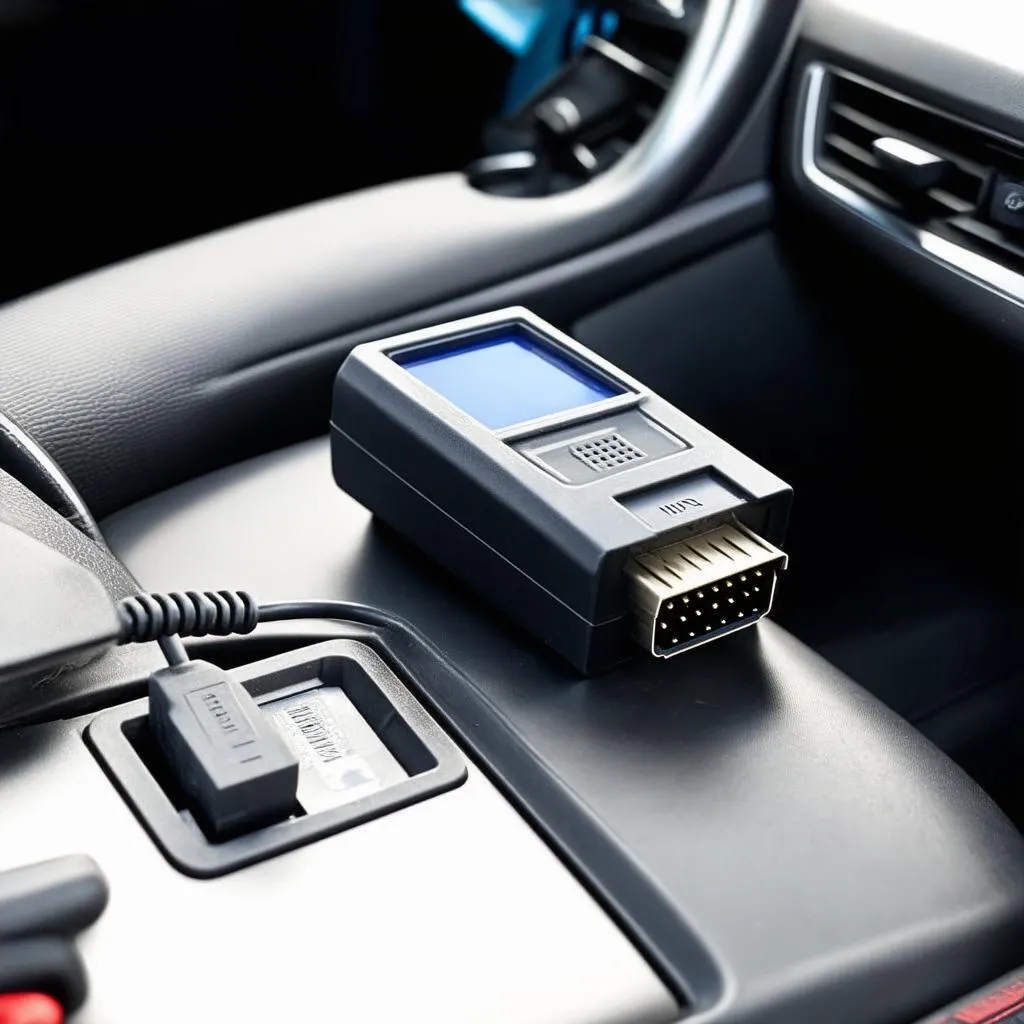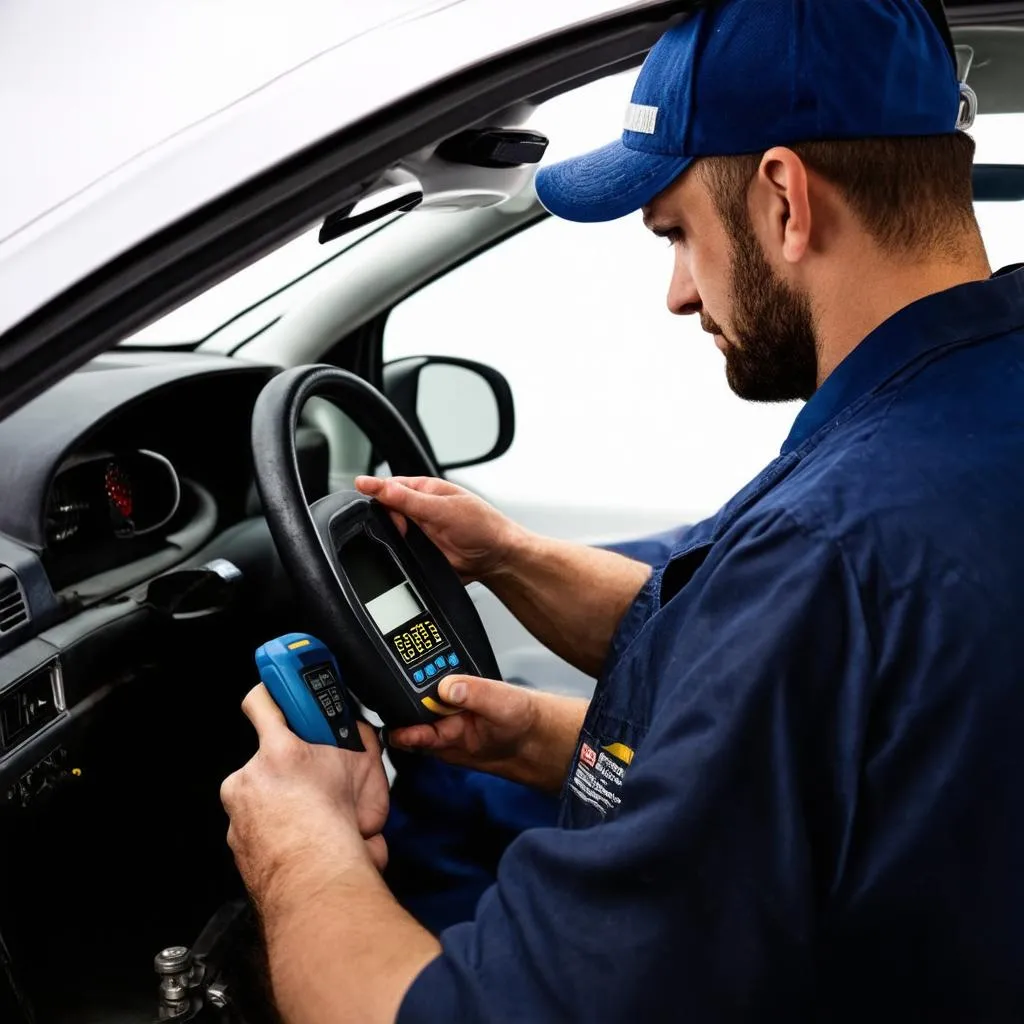Have you ever encountered a mysterious check engine light illuminating your dashboard? It can be a daunting experience, leaving you with a sense of dread and uncertainty. This is where Obd Dtc Codes come into play. These cryptic codes, much like the ancient Egyptian hieroglyphics, hold the key to unraveling the mysteries of your car’s health.
What are Obd Dtc Codes?
OBD stands for On-Board Diagnostics. It’s a system embedded in modern vehicles that constantly monitors various aspects of your car’s performance. When something goes awry, the system records a diagnostic trouble code (DTC), essentially a numerical message detailing the problem.
Understanding the Code Language: Unlocking the Secrets
Think of these codes as a language spoken by your car. Each DTC code consists of a specific combination of letters and numbers, each having its own unique meaning. For instance, a code starting with “P” indicates a powertrain-related issue, while a “B” code points to a body control module malfunction.
Decoding the Enigma: Why are Obd Dtc Codes Important?
OBD DTC codes are crucial for several reasons:
- Pinpointing the Problem: They provide valuable insights into the underlying cause of the malfunction, helping mechanics diagnose and repair the issue quickly and efficiently.
- Preventing Catastrophic Damage: Early detection and intervention based on DTC codes can prevent minor problems from escalating into major, costly repairs.
- Ensuring Vehicle Safety: By identifying and addressing potential issues, DTC codes contribute to a safer driving experience.
Using a OBD Scanner: Your Key to the Code’s Secrets
To unlock the mysteries of these codes, you’ll need a tool called an OBD scanner. This device connects to your car’s OBD-II port, usually found under the dashboard or near the steering column. By reading the codes, you can gain valuable information about your car’s health.
Common Obd Dtc Codes and Their Meanings
Here’s a breakdown of some common OBD DTC codes and their interpretations:
P0171: System Too Lean (Bank 1): This code indicates that the air/fuel mixture in your engine is too lean, meaning there’s not enough fuel for proper combustion. This could be caused by a faulty oxygen sensor, a clogged air filter, or a leak in the intake manifold.
P0300: Random/Multiple Cylinder Misfire Detected: This code signals that your engine is misfiring in one or more cylinders, which can be caused by faulty spark plugs, a bad ignition coil, or a fuel delivery problem.
P0420: Catalyst System Efficiency Below Threshold (Bank 1): This code points to a problem with your catalytic converter, which is responsible for reducing harmful emissions. A clogged converter or a faulty oxygen sensor could be the culprit.
C1234: ABS Electronic Control Module (ECM) Internal Fault: This code indicates an internal problem with the ABS control module, potentially requiring replacement.
B1234: Body Control Module Fault: This code signals a malfunction in the body control module, responsible for controlling features like lights, windows, and locks.
Interpreting DTC Codes with Confidence: Trusting Your Gut and Consulting Professionals
While the language of DTC codes might seem complex, don’t be intimidated. With some practice and a little guidance, you can decipher their messages and gain valuable insights into your car’s health. However, it’s essential to remember that these codes are just one piece of the puzzle.
If you’re unsure about a specific code or its meaning, it’s always wise to consult a professional mechanic for a proper diagnosis and repair.
Troubleshooting DTC Codes: A Step-by-Step Approach
Here’s a step-by-step approach to tackling DTC codes:
- Gather Information: Note down the DTC code, the vehicle year, make, and model, and any other relevant details.
- Consult a Resource: Utilize reliable online resources or repair manuals to understand the code’s meaning and possible causes.
- Inspect Components: Based on the code’s description, visually inspect the related components, looking for signs of damage or wear.
- Test Components: Use appropriate tools or techniques to test the suspect components, such as a multimeter for electrical tests or a pressure gauge for fuel system checks.
- Clear the Code: After making necessary repairs, clear the DTC code using your OBD scanner and test drive the vehicle to ensure the issue is resolved.
Understanding Obd Dtc Codes: A Holistic Approach
Think of your car as a living organism, with each component playing a crucial role in its overall well-being. OBD DTC codes are like whispers from your car, warning you of potential issues before they escalate into major problems. By listening to these whispers and taking appropriate action, you can ensure your car’s longevity and maintain its optimal performance.
Commonly Asked Questions about Obd Dtc Codes
- Q: Can I clear OBD DTC codes myself?
A: Yes, you can clear OBD DTC codes using a scanner. However, it’s essential to understand that clearing the code doesn’t fix the problem. It simply erases the warning message.
- Q: How do I find the OBD-II port in my car?
A: The OBD-II port is typically located under the dashboard, near the steering column, or in the center console. It’s usually marked with a small plug-like icon.
- Q: What are the different types of OBD scanners?
A: OBD scanners come in various forms, from basic code readers to advanced diagnostic tools that can access live data and perform specialized tests. Choose a scanner that suits your needs and budget.
- Q: Can OBD DTC codes help me diagnose problems with my car’s electrical system?
A: Yes, OBD DTC codes can provide information about electrical issues, such as problems with sensors, actuators, or wiring. However, specialized electrical diagnostics may be required for more complex issues.
Looking Forward: The Future of OBD Diagnostics
The world of OBD diagnostics is constantly evolving. New technologies are emerging, making it easier for car owners to monitor their vehicles and diagnose potential issues. With the advancement of connected car technologies, we can expect to see even more sophisticated diagnostic tools and services in the future.
Connect with Us: Your Trusted Partner in Automotive Diagnostics
At TechCarUSA, we’re passionate about empowering car owners with the knowledge and tools to maintain their vehicles. If you have any questions about OBD DTC codes or need assistance with automotive diagnostics, please don’t hesitate to reach out to our team of experts.
We’re available 24/7 to provide personalized guidance and support. Contact us via Whatsapp: +84767531508.
Explore Our Resources: Unlocking the Secrets of Your Car
For further insights into OBD DTC codes and automotive diagnostics, explore our comprehensive resources on TechCarUSA.com:
- https://techcarusa.com/auto-obd-dtc-codes/
- https://techcarusa.com/ford-fusion-obd-ii-dtc-codes/
- https://techcarusa.com/2006-civic-obd-device-dtc-codes/
- https://techcarusa.com/94-accord-obd-port-location/
- https://techcarusa.com/example-obd-reports/
Final Thoughts: Empowering You with Automotive Knowledge
Remember, understanding OBD DTC codes is like holding the key to unlocking the secrets of your car. By staying informed, you can proactively address potential issues and ensure a safe and reliable driving experience.
We encourage you to explore our website for more valuable insights into automotive care and maintenance.
Don’t hesitate to leave a comment below and share your experiences with OBD DTC codes. We’re here to help you navigate the world of automotive diagnostics with confidence!
 OBD Scanner Tool
OBD Scanner Tool
 Car Dashboard Warning Light
Car Dashboard Warning Light
 Car Mechanic Diagnostic Check
Car Mechanic Diagnostic Check